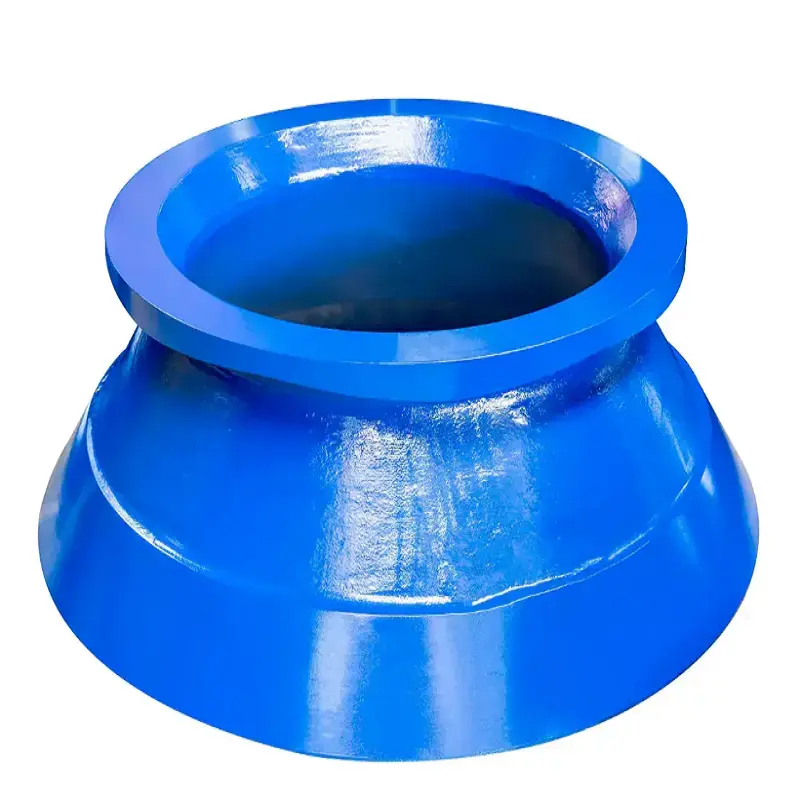The principle of lamination crushing: An efficiency multiplier for hard rock crushing
The high production volume of Hpgr Rollers stems from the ultimate application of the "lamination crushing" principle. Unlike traditional impact crushing (which relies on direct impact of equipment on materials), HPGR uses high pressure (100-500 mpa) applied by rollers to form a dense material layer (void ratio < 15%) between the rollers. The particles of the materials squeeze and rub against each other to achieve crushing. This method is particularly efficient for hard rock and difficult-to-break materials
The crushing ratio improvement: When processing granite, the crushing ratio of the HPGR Rollers can reach 1:8-1:10 (i.e., 100mm feed can be crushed to 10-12mm), which is more than twice that of the Jaw Crusher (crushing ratio 1:4), reducing the grinding load of the subsequent ball mill and increasing the overall process output by 20%.
The proportion of fine particles has increased: The proportion of fine particles (< 2mm) produced by lamination crushing exceeds 60%, far exceeding the 30-40% of traditional crushing. It is particularly suitable for scenarios that require fine-grained products (such as pellet production), and can directly proceed to the next process without additional crushing steps.
Particle shape optimization: After hard rock is laminated and crushed, the particles take on a cubic shape with few edges and corners and a high bulk density (for example, the bulk density of iron ore is increased by 15%), which is conducive to subsequent sorting and transportation and reduces logistics costs.
Automation and continuous design: Reduce downtime and stabilize output
The continuity of hard rock crushing is the key to ensuring high output. The HPGR Rollers minimize unplanned downtime through intelligent design. Both ends of the roller are equipped with an online wear monitoring system (laser ranging + infrared temperature measurement), which can monitor the surface wear amount and temperature in real time. When the wear amount reaches 5mm, it will automatically issue a warning. The planned shutdown and replacement time can be precise to the hour, avoiding production line interruption caused by sudden faults.
For metal foreign objects that may be mixed in hard-to-break materials (such as drill bit fragments in mines), the roller is equipped with an overload protection device: When foreign objects enter the roller room, the hydraulic system quickly depressurizes within 0.1 seconds, and the rollers instantly separate by 0.5mm to prevent damage to the tooth surface. Then, they automatically reset and continue operation. The entire process only takes 3 to 5 seconds, and the impact on output is controlled within 0.1%.
In addition, the variable frequency speed control motor can automatically adjust the roller speed (15-30 RPM) according to the material feed volume. When the processing volume fluctuates (±20%), it can maintain the stability of the material layer thickness between the rollers (80-120mm), ensuring that the crushing efficiency does not decline. This adaptive ability enables HPGR to maintain a stable hourly output (up to 800-1,500 tons) even in the processing of multi-variety hard rock mixtures (such as the mixture of iron ore and quartzite).
The actual benefits of hard rock crushing scenarios
In the application case of a certain iron ore mine in Australia, after adopting the optimally designed HPGR Rollers, compared with the traditional Cone Crusher:
The daily output of a single machine has been raised from 12,000 tons to 18,000 tons, an increase of 50%.
The cost of crushing each ton of ore has dropped from 1.2 US dollars to 0.8 US dollars, saving over 1 million US dollars annually.
The roller replacement cycle has been extended from 15 days to 45 days, reducing maintenance working hours by 60%.
At a certain granite quarry in Brazil, when the HPGR Rollers processed granite with a particle size of 300mm, the proportion of particles less than 10mm in the crushed products reached 90%, directly meeting the demand for concrete aggregates. This eliminated the traditional two-stage crushing process of jaw crushers and impact crushers, reducing the investment cost of the production line by 35%.
The high output and efficiency of HPGR Rollers are the result of the combined effects of material wear resistance, structural functionalization, pressure precision and operation intelligence. In the processing of hard rock and refractory materials, it breaks through the efficiency bottleneck of traditional equipment through the principle of lamination crushing, and at the same time reduces the comprehensive cost with low energy consumption and high continuity. For international wholesale purchasers, grasping the actual benefits brought by these design optimizations can provide more competitive crushing solutions for customers in fields such as mining and building materials, and gain an advantage in the market for handling high-hardness materials.




